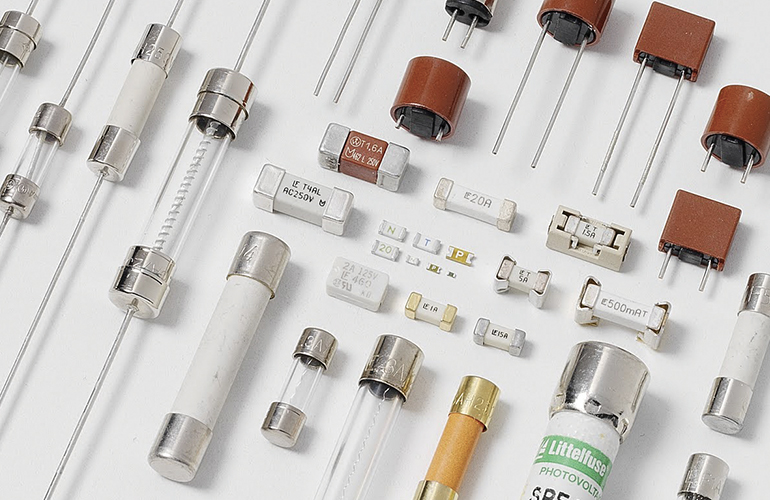
Understanding the differences between fuses, PTC devices, and eFuse protection ICs
By Pete Pytlik, FAE Manager, Littelfuse, Inc.
Virtually every piece of electrical and electronic equipment requires various circuit protection devices to comply with safety and performance standards. Properly selected protection devices will help improve end-product uptime, sustainability, and reliability, reduce the risk of shock and fire, and minimize other operating dangers. This article addresses electronic components that protect consumer devices against overcurrents.
Introduction
Overcurrent protection devices fall into one of three major categories:
- Fuses protect sensitive circuits by completely stopping the flow of energy to them. They are, essentially, “one and done” devices in that a fuse can protect from an overload condition by opening only once but then require replacement. The heart of a typical fuse is an enclosed length of wire or a metal strip. If the current level exceeds the fuse’s operating range, the metal wire or strip melts and stops the current flow.
- Positive temperature coefficient (PTC) devices, typically made of a conductive polymer, increase resistance as their temperature increases, limiting the circuit current. Their design prevents unsafe levels of current while allowing safe current levels. Their resistance will “reset” automatically when the current and temperature return to safe levels.
- eFuse Protection ICs provide a complete protection solution for semiconductor circuits. In addition to overcurrent protection, the eFuse ICs include overvoltage and inrush current protection. These components also provide reverse current blocking, under voltage lockout (UVLO), soft start control, and overtemperature protection. The internal control logic generates real-time diagnostic output. All this performance is in a single-chip package and applies to circuits running on DC voltage levels from 3.3VDC to 28VDC.
For devices powered by the AC power line, choosing between a fuse and a PTC is sometimes just a matter of the circuit designer’s preference. However, essential considerations dictate which option may be better for a specific application. For example, when designing consumer electronics, power lines, telecom/data centers, I/O ports, process controls, and medical equipment protection applications, PTCs are the best choice. Why? Because they automatically reset. Using a fuse requiring replacement each time an overcurrent condition occurs is impractical. In other cases, fuses make sense because they stop the current entirely in a fault condition. It is desirable if the designer’s primary concern is safety or avoiding downstream circuit equipment damage. Fuses can also be useful in diagnostics by helping designers trace the origin of overcurrent faults.
Designers developing battery-powered devices that operate on DC voltages no higher than 28 V can consider an eFuse, which provides all the modes of protection the device needs. The eFuse, like a PTC, does not require replacement following an overcurrent condition. The eFuse detects an overcurrent or a short circuit and reduces the current to a safe, user-programmable level. The eFuse includes overvoltage protection as well. The eFuse simplifies the designer’s work and saves precious PC board (PCB) space. In addition to protection at the device’s input, a designer can use an eFuse to protect critical internal circuitry.
Protection Functions: Fuses vs. PTCs vs. eFuses
Fuses serve as an intentional weak link within an electrical circuit. They protect discrete components or complete circuits by melting reliably under current overload conditions.
The process through which PTCs provide overcurrent protection is more complex. A PTC functions by limiting a potentially damaging overcurrent to a safe level. The excessive current passing through the device causes internal heating (I2R), which raises the temperature of the PTC and increases its resistance. The conductive polymer materials used to manufacture PTCs contain particles of carbon black as the conductive media. The amount of carbon black introduced into the mixture controls the resistance. The internal heating caused by the overcurrent expands the polymer, which causes the carbon black to shift. The result is reduced conductivity (i.e., higher resistance).
The resistance of the PTC is generally a small part of the total circuit impedance until the heating occurs. The increase in resistance for a polymer-based PTC is nonlinear, and this relatively significant increase in resistance will reduce or limit the circuit current to a safe level. The transition from low to high resistance is known as the trip point (Figure 1).
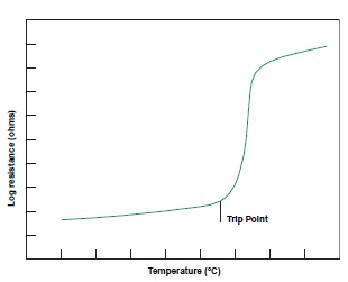
A PTC can be reset or returned to the lower resistance state by removing the power from the circuit, which allows the device to cool down so it’s ready to respond to future overloads.
Unlike the fuse and the PTC, which operate based on temperature, the eFuse operates by electronically monitoring the current and forcing the current to a programmed safe level should an overcurrent or a short circuit occur. Figure 2 shows a schematic diagram of one type of eFuse with overcurrent protection, overvoltage protection, thermal protection, under voltage lockout, and soft start control. The DFN2x2_8L surface mount package shown on the right is an example of one model of an eFuse.
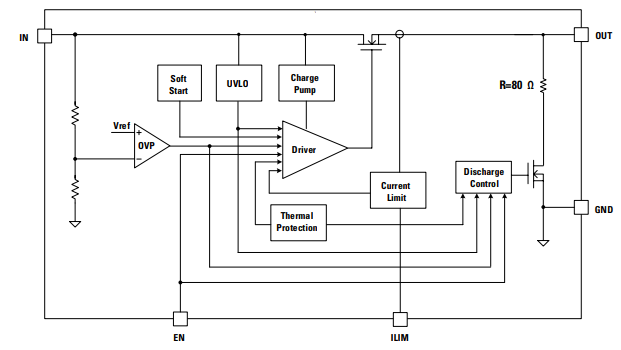
Choosing between the three overcurrent protection types
Understanding the differences in performance between fuses, PTCs, and eFuses will simplify choosing the best option for a specific overcurrent application. Although the most obvious difference is that the PTC and eFuse are resettable, several other operating characteristics differentiate these components. The terminology used for PTCs and eFuses is often similar, but not the same as for fuses, and leakage current and interrupting rating are parameters in this category.
- Leakage current: PTCs “trip” when transitioning from the low resistance state to the high resistance state due to an overload. The PTC protects by limiting the current flow to some leakage level. Leakage current can range from around a hundred milliamps at rated voltage to several hundred milliamps at lower voltages. In contrast, a fuse completely interrupts the current flow when an overload melts it open, and this open circuit results in “0” leakage current. With eFuses, the designer determines the magnitude of the current, the ILIM, current that flows following an overcurrent. The designer defines the ILIM current to ensure the resulting power does not damage the eFuse or downstream circuitry.
- Interrupting rating: A PTC is rated for a maximum short-circuit current at its rated voltage. This fault current level is the maximum current the PTC can withstand, but it won’t interrupt the current flow. A typical PTC short circuit rating is 40A. Fuses, however, interrupt the current flow in response to the overload; their interrupting ratings can be anywhere from a few hundred amps to 10,000 amps at rated voltage. The eFuse also does not interrupt the current. The eFuse just lowers the current to a programmed safe level.
The parameters of the circuit to be protected can often dictate the component choice based on typical device rating differences:
- Voltage rating: General-use PTCs typically are unavailable with ratings higher than 240V; fuses can be rated as high as 600V. The eFuse is limited to low-voltage DC circuits with voltages under 28VDC.
- Current rating: The operating current rating for PTCs can be as high as 11A for low voltage; the maximum level for fuses can be more than 20A. The eFuses protect low-power DC circuits and have maximum current ratings of 6A.
- Temperature rating: The functional upper limit for a PTC is generally 85°C to 125 °C for some low voltage rating devices; the maximum operating temperature for fuses is 125 °C to 150 °C for some ceramic body fuses. Both device types require derating for temperatures higher than 20°C. A representative curve for that purpose, shown in Figure 3, compares PTCs to fuses and illustrates that a PTC requires more derating than a fuse at a given temperature. Always consult a device’s datasheet for information on rerating a specific PTC or fuse at ambient temperatures other than 20°C.
Since the eFuse does not operate on a thermal property, the eFuse does not have a significant temperature derating curve. The eFuse temperature derating curve would be nearly flat compared to a fuse and a PTC. Also, eFuses can operate up to 150° C, temperatures much higher than PTCs and equivalent to ceramic body fuses.
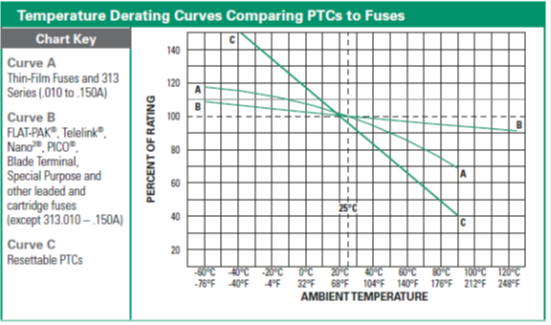
- Agency approvals: Approvals for fuses include recognition under the Component Program of Underwriters Laboratories and certification from the CSA Component Acceptance Program. Many fuses are also available with complete “Listing” in accordance with the Supplementary Fuse Standard UL 248-14, as well as IEC 60127 and VDE.
PTCs are recognized under the Component Program of Underwriters Laboratories to UL Thermistor Standard 1434. They have also been certified under the CSA Component Acceptance Program. PTCs can also be approved to IEC Standard 60730-1 (Automatic Electric Controls) with certification by TUV, VDE, etc.
Unlike fuses and PTCs, the eFuse neither interfaces with the AC power line nor operates at voltages over 42V. Thus, the eFuse does not require component recognition or certification to a specific safety standard.
- Resistance: PTCs have roughly twice the resistance of similarly rated fuses. A series MOSFET determines the resistance of an eFuse. Series MOSFETs used in eFuses have a maximum RDS(On) of 50 mΩ, which is a comparable resistance to fuses and PTCs and can even be lower, depending on the model of fuse or PTC under consideration.
- Time-current characteristic: A PTC’s response speed is similar to the time delay of a time-delayed fuse. The eFuse is a fast-acting component with current limit activation in milliseconds.
Conclusion
The designer has many options for protecting a product from overcurrent. To learn more about the advantages and disadvantages of fuses, PTCs, and eFuses for specific applications, consult the following documents, courtesy of Littelfuse:
- Fuseology Design Guide
- Circuit Protection Product Selection Guide
- Littelfuse setP™ Design & Installation Guide
- Protection IC Overview Technical Brief
Unlike fuses, you don’t have to replace resettable Polymeric Positive Temperature Coefficient (PPTC) devices after a fault event. PPTCs allow the circuit to return to the normal operating condition after removing the power and the overcurrent condition. Numerous PPTC devices also include resettable thermal shutoff protection for sensitive mobile electronics.
 |
ASMDC, femtoASMD, and picoASMD Series Resettable PPTCs Several AEC-Q200-qualified PPTC resettable devices are available to ensure robust overcurrent protection in extremely harsh environments. These devices help tackle the circuit protection challenges of today’s sophisticated automotive electronics, including infotainment, GPS, CAN/LIN bus networks, body electronics, security, keyless entry, and Advanced Driver Assistance Systems (ADAS), etc. View the video. |
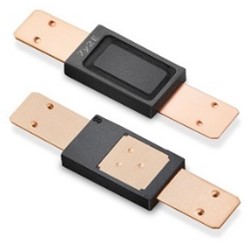 |
MHP-TAC 08 Series Metal Hybrid PPTC Battery Mini-Breakers Many mobile devices and consumer electronics utilize lithium-ion polymer and prismatic batteries, such as battery-powered notebooks, tablets, smartphones, and game consoles. The combination of thin form factors, high cell capacities, and high battery discharge rates typical of these applications create unique circuit protection requirements like low thermal cut-off temperatures, high hold current ratings, and compact size. The MHP-TAC connects a PPTC device in parallel with a bimetal protector—a resettable thermal cut-off device—to protect high-capacity battery cells from damage caused by overheating and overcurrents. View the video. |
 |
PolySwitch® setP™ Digital Temperature Indicators protect USB Type-C The Littelfuse setP™ temperature indicator helps protect USB Type-C plugs from severe damage caused by overheating. It is designed to the unique specifications of USB Type-C and is capable of helping to protect even the highest levels of USB Power Delivery during charging cycles. Watch the video for a demonstration of how a USB Type-C plug functions with and without setP. |
 |
eFuse Protection ICs provide complete protection in a single chip One IC provides complete protection for battery-operated products and critical low-power circuits requiring high reliability. Operating in circuits with up to 28VDC voltages, eFuses protect against overcurrent, overvoltage transients, overtemperature, inrush current, and a low DC voltage rail. All this capability resides in a single, space-saving, surface mount package. One component solves all the designer’s challenges for circuit protection. View the eFuse Protection ICs video. Also, see the eFuse for USB Type-C Port Protection video. |
Sponsored content by Littelfuse


Leave a Reply
You must be logged in to post a comment.